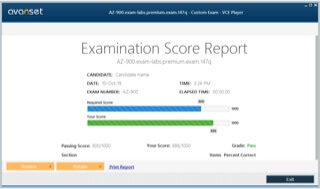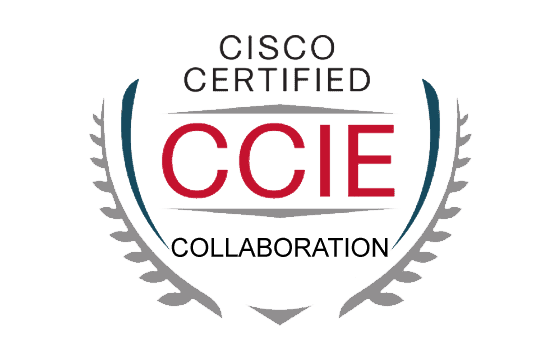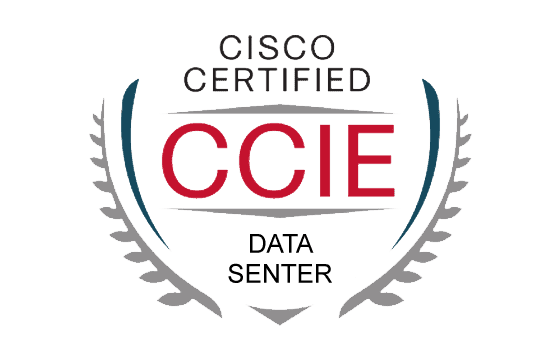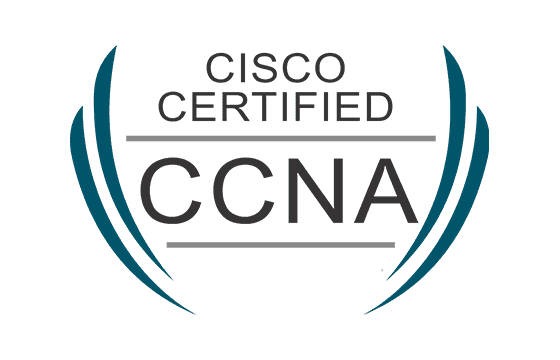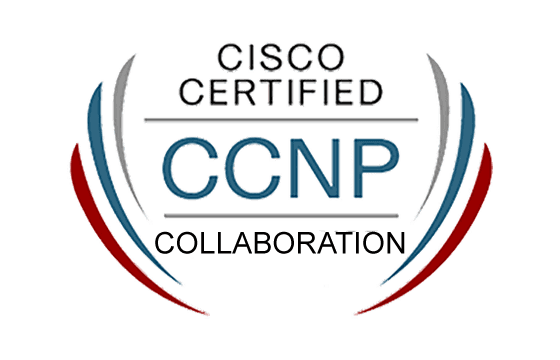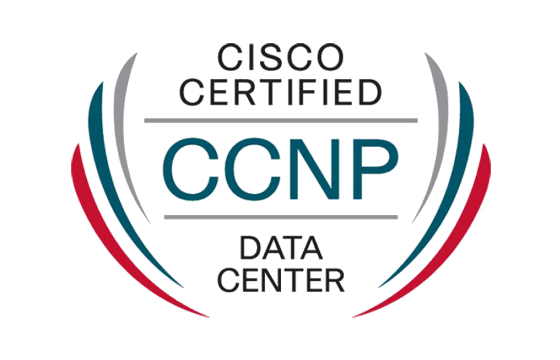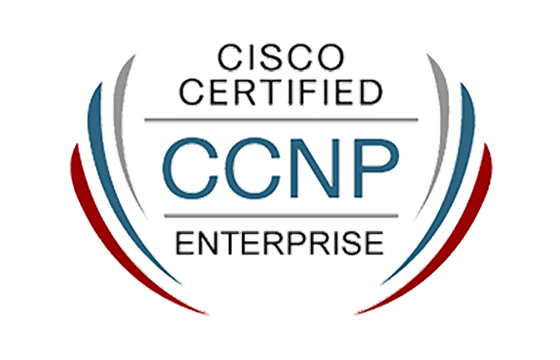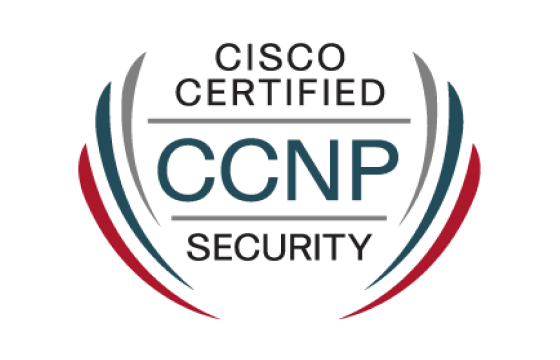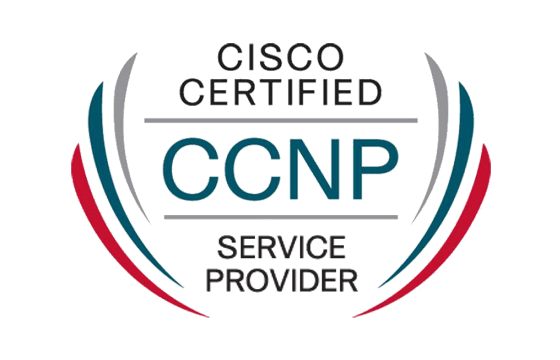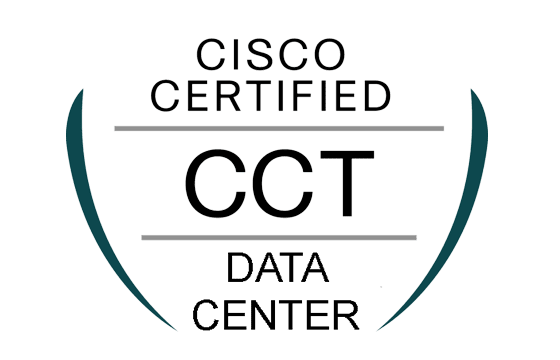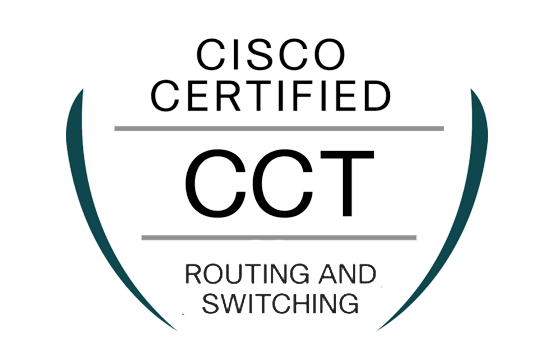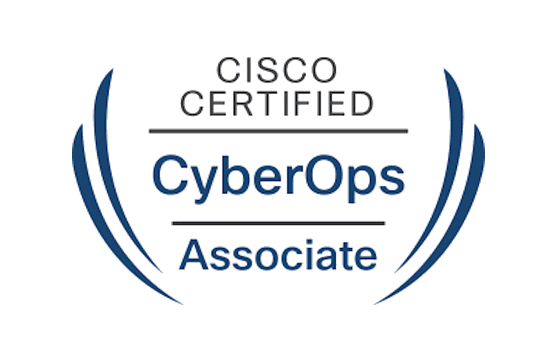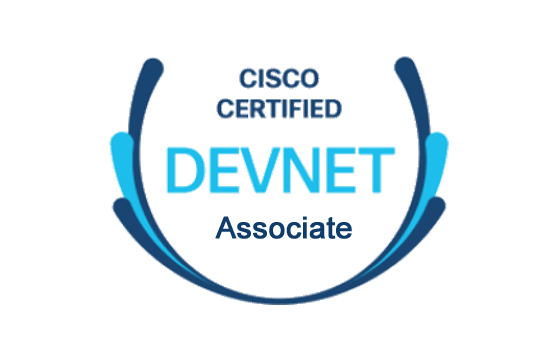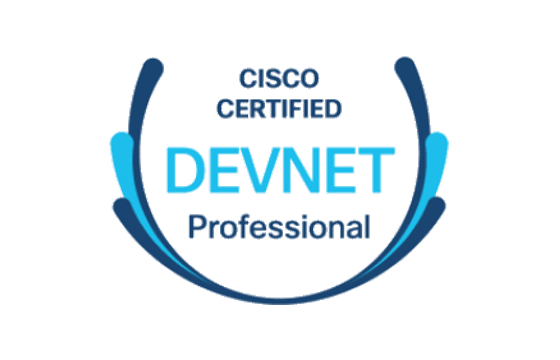Pass Your Cisco 350-001 Exam Easy!
Cisco 350-001 Exam Questions & Answers, Accurate & Verified By IT Experts
Instant Download, Free Fast Updates, 99.6% Pass Rate
This exam was replaced by Cisco with 400-101 exam
Archived VCE files
Cisco 350-001 Practice Test Questions, Exam Dumps
Cisco 350-001 (CCIE Written) exam dumps vce, practice test questions, study guide & video training course to study and pass quickly and easily. Cisco 350-001 CCIE Written exam dumps & practice test questions and answers. You need avanset vce exam simulator in order to study the Cisco 350-001 certification exam dumps & Cisco 350-001 practice test questions in vce format.
A Comprehensive Guide to the Cisco 350-001 Exam Blueprint
The 350-001 Exam, historically known as the CCIE Routing and Switching Written Exam, serves as the crucial first step toward achieving the prestigious Cisco Certified Internetwork Expert certification. Passing this exam validates a candidate's expert-level knowledge of complex network infrastructure. It is a two-hour, 90-110 question test that assesses the theoretical understanding required to design, implement, operate, and troubleshoot intricate enterprise networks. The exam is not merely a test of memorization; it demands a deep, conceptual grasp of network principles and their practical applications. Success in the 350-001 Exam demonstrates that a candidate possesses the foundational knowledge necessary to proceed to the hands-on lab portion of the CCIE certification track.
The scope of the 350-001 Exam is extensive, covering a broad range of topics that are meticulously outlined in its official blueprint. This blueprint is the single most important document for any aspiring candidate, as it details the specific domains and their respective weightings. The domains typically include Network Principles, Layer 2 Technologies, Layer 3 Technologies, VPN Technologies, Infrastructure Security, and Infrastructure Services. Understanding these domains and the percentage of the exam they represent allows candidates to allocate their study time effectively. Neglecting any section of the blueprint is a common pitfall, as the exam is designed to test knowledge across this entire spectrum of technologies and concepts.
Candidates should be prepared for a variety of question formats. While traditional multiple-choice questions (with single or multiple correct answers) form a significant portion of the exam, other types are also included to test knowledge more dynamically. These can include drag-and-drop questions, which require matching items or placing them in a correct sequence, and simlets, which present a simulated network environment where candidates might need to interpret configurations or diagnose issues. This variety ensures that the 350-001 Exam effectively measures not just what a candidate knows, but how well they can apply that knowledge in realistic scenarios, setting the stage for the practical challenges of the lab exam.
The Evolution of Network Principles in the 350-001 Exam
A solid foundation in network principles is non-negotiable for anyone attempting the 350-001 Exam. This domain delves into the core theories that underpin all modern networking. Candidates must have an expert-level understanding of the TCP/IP and OSI models, including the functions of each layer and the encapsulation and de-encapsulation process. Questions may explore the specifics of TCP operations, such as the three-way handshake, windowing, and congestion control mechanisms, as well as the connectionless nature of UDP. It is essential to understand packet-level details and be able to analyze packet headers for both IPv4 and IPv6 to troubleshoot complex communication issues.
Beyond protocol mechanics, the 350-001 Exam assesses knowledge of network architecture and design. This includes familiarity with hierarchical network design principles, such as the core, distribution, and access layers, and the benefits this structure provides in terms of scalability, performance, and manageability. Candidates should understand concepts like modularity, resiliency, and fault domains. The exam also expects a deep understanding of IP addressing. This encompasses advanced IPv4 variable-length subnet masking (VLSM), route summarization for scalability, and the intricacies of IPv6 addressing, including address types (global unicast, unique local, link-local), autoconfiguration (SLAAC), and the transition mechanisms from IPv4.
Furthermore, the principles of Quality of Service (QoS) are a key component of this domain. While specific QoS mechanisms are covered in Infrastructure Services, the foundational understanding of why QoS is necessary is tested here. This includes knowing the different types of network traffic (voice, video, data), their performance requirements (latency, jitter, bandwidth), and the challenges of providing service guarantees in a converged network. The 350-001 Exam requires candidates to think like network designers, understanding the trade-offs and fundamental theories that inform every configuration choice made in a large-scale enterprise environment.
Mastering Layer 2 Technologies
Layer 2 technologies form the bedrock of local area networking, and the 350-001 Exam rigorously tests a candidate's expertise in this area. A thorough understanding of Ethernet is paramount, from its frame structure and MAC addressing to the various physical standards. The exam expects candidates to be intimately familiar with the operation of LAN switching, including MAC address table learning, frame forwarding, and loop avoidance. Central to loop avoidance is the Spanning Tree Protocol (STP). Candidates must know the inner workings of legacy STP (802.1D), as well as its more efficient successors, Rapid Spanning Tree Protocol (RSTP, 802.1w) and Multiple Spanning Tree Protocol (MSTP, 802.1s).
The exam delves deep into the nuances of these protocols. For STP and RSTP, this includes understanding port roles (root, designated, alternate, backup), port states, and the convergence process. Candidates must be able to predict the STP topology based on bridge IDs and path costs. For MST, knowledge of instances, regions, and the mapping of VLANs to instances is critical. The 350-001 Exam also covers a suite of STP enhancement features designed to improve stability and security, such as PortFast for fast port transitions, BPDU Guard and BPDU Filter to protect the STP domain, and Root Guard and Loop Guard to prevent topology instability.
Beyond STP, VLANs and trunking are fundamental concepts. Candidates need to master the 802.1Q trunking protocol, including the concept of the native VLAN and its security implications. While becoming less common, Cisco's proprietary VLAN Trunking Protocol (VTP) in its various versions is also part of the blueprint, requiring an understanding of its modes (server, client, transparent), operation, and potential risks like accidental VLAN database overwrites. Finally, link aggregation technologies, specifically EtherChannel using PAgP and LACP, are tested. Candidates should understand their configuration, load-balancing algorithms, and how they enhance both bandwidth and resiliency in the switched network.
Core Layer 3 Technologies: An IGP Deep Dive
The Layer 3 Technologies domain is one of the most heavily weighted sections of the 350-001 Exam, focusing primarily on Interior Gateway Protocols (IGPs). A deep and granular understanding of Enhanced Interior Gateway Routing Protocol (EIGRP) is essential. This goes beyond basic configuration to the core mechanics of the protocol. Candidates must fully comprehend the Diffusing Update Algorithm (DUAL), the concepts of Feasible Distance (FD) and Reported Distance (RD), and the selection of successor and feasible successor routes. Understanding how EIGRP establishes neighbor adjacencies, the purpose of its various packet types, and how the composite metric is calculated using K-values is crucial.
Equally important is an expert-level knowledge of Open Shortest Path First (OSPF). The 350-001 Exam expects mastery of OSPFv2 for IPv4 and OSPFv3 for IPv6. This includes a detailed understanding of the different LSA types (1 through 7, and a conceptual understanding of others) and their role in building the link-state database. Candidates must know the various OSPF area types, including standard, stub, totally stubby, and not-so-stubby areas (NSSA), and be able to explain how they are used to control LSA flooding and scale the network. The Designated Router (DR) and Backup Designated Router (BDR) election process on multi-access segments is another key topic that requires thorough preparation.
A significant part of this domain involves the interaction between different routing protocols. Route redistribution is a complex but critical topic for the 350-001 Exam. Candidates need to understand the techniques for redistributing routes between, for example, EIGRP and OSPF. This includes managing administrative distance, manipulating metrics during redistribution to ensure optimal path selection, and preventing routing loops using mechanisms like route maps and distribute lists. Concepts such as policy-based routing (PBR), which allows for traffic forwarding based on criteria other than the destination IP address, are also tested, highlighting the need for a flexible and policy-driven approach to routing.
Advanced Border Gateway Protocol Concepts
Border Gateway Protocol (BGP) is the protocol that powers the internet, and as such, it is a cornerstone of the 350-001 Exam. The exam requires a far deeper understanding than just basic eBGP peering between autonomous systems. Candidates must master the fundamental differences between External BGP (eBGP) and Internal BGP (iBGP), including their administrative distance values, loop prevention mechanisms (AS_PATH for eBGP, split-horizon for iBGP), and next-hop behavior. A key challenge in iBGP is the full-mesh requirement, and candidates must understand the two primary scalability solutions: route reflectors and confederations, including their operation, configuration, and use cases.
The heart of BGP mastery lies in understanding its complex path selection algorithm. The 350-001 Exam expects candidates to know the sequence of BGP path attributes that are evaluated to determine the best path to a destination. This involves memorizing the attribute order, from WEIGHT and LOCAL_PREF down to MED and router ID. More importantly, candidates must understand what each attribute represents, how it is used, and how to manipulate these attributes using tools like route maps to influence both inbound and outbound traffic paths. This is the essence of traffic engineering in a BGP environment.
Advanced BGP topics are also fair game. The concept of BGP communities, which are tags attached to prefixes to signal routing policy, is critical. Candidates should be familiar with standard communities as well as extended and large communities. Multiprotocol BGP (MP-BGP) is another essential area, as it extends BGP to carry routing information for various address families beyond just IPv4 unicast. Understanding how MP-BGP is used for IPv6 routing and as the foundation for MPLS VPNs is a key requirement for any candidate preparing for the 350-001 Exam. This demonstrates the protocol's versatility in modern, multi-service networks.
The Role of VPN Technologies
Virtual Private Networks (VPNs) are crucial for secure and private communication over public networks, and the 350-001 Exam tests several key VPN technologies. A foundational topic is Generic Routing Encapsulation (GRE), a simple tunneling protocol that encapsulates a wide variety of network layer protocols inside virtual point-to-point links. Candidates should understand how to configure a basic GRE tunnel and recognize its stateless nature and lack of inherent security. This forms the basis for more complex VPN solutions.
One of the most important VPN technologies on the blueprint is Dynamic Multipoint VPN (DMVPN). DMVPN is a powerful and scalable solution for connecting multiple sites in a hub-and-spoke or spoke-to-spoke topology. The 350-001 Exam requires a deep understanding of its core components: Multipoint GRE (mGRE) tunnels, the Next Hop Resolution Protocol (NHRP) which allows spokes to discover each other's public IP addresses, and IPsec for securing the data. Candidates should be able to differentiate between the DMVPN phases (1, 2, and 3) and understand the traffic flow and scalability implications of each.
While DMVPN often uses IPsec for encryption, IPsec itself is a standalone topic. The exam expects candidates to understand the IPsec framework, including its main protocols: Authentication Header (AH) for integrity and authenticity, and Encapsulating Security Payload (ESP) for confidentiality, integrity, and authenticity. Knowledge of the Internet Key Exchange (IKE) protocol, both version 1 and 2, and its phases for negotiating security associations (SAs) is also required. Furthermore, a conceptual understanding of MPLS Layer 3 VPNs is essential. Candidates must be familiar with the core components like VRFs, Route Distinguishers (RDs), and Route Targets (RTs) that enable the creation of private routing domains over a shared service provider network.
Preparing for Infrastructure Security Questions
Network security is woven into every aspect of modern infrastructure, and the 350-001 Exam reflects this reality. The Infrastructure Security domain covers the methods used to protect the network devices themselves and the data that traverses them. A primary focus is on securing device access. This involves implementing robust authentication, authorization, and accounting (AAA) using protocols like TACACS+ and RADIUS. Candidates should understand the differences between these two protocols and how to configure a device to use a centralized AAA server for managing administrative access, thereby enhancing security and accountability.
Protecting the control plane is another critical security concept tested on the exam. The control plane is the brain of a network device, and if it is overwhelmed, the entire network can fail. Candidates must be familiar with techniques like Control Plane Policing (CoPP), which uses QoS mechanisms to rate-limit traffic destined for the device's processor, mitigating the effects of denial-of-service attacks. Securing routing protocols is also paramount. The 350-001 Exam requires knowledge of how to configure authentication for EIGRP (MD5), OSPF (plain text, MD5, SHA), and BGP (MD5) to prevent unauthorized or malicious routing updates from disrupting the network topology.
At Layer 2, a number of specific security features are tested. These features are designed to mitigate common LAN-based attacks. Candidates must understand the operation and configuration of DHCP snooping to prevent rogue DHCP servers, Dynamic ARP Inspection (DAI) to prevent ARP spoofing and man-in-the-middle attacks, and IP Source Guard to prevent IP spoofing. Finally, access control lists (ACLs) are a fundamental security tool. The exam expects proficiency with standard, extended, named, and even more advanced ACLs like time-based ACLs. A deep understanding of ACL logic and placement is essential for filtering traffic effectively as part of a comprehensive security policy.
Understanding Infrastructure Services
The Infrastructure Services domain of the 350-001 Exam covers a collection of essential technologies that enable and optimize network operations. Quality of Service (QoS) is a major component, requiring a deep conceptual and practical understanding. Candidates must know the different QoS models, such as Best-Effort, Integrated Services (IntServ), and Differentiated Services (DiffServ), with a strong focus on the latter. This involves understanding the entire QoS toolkit: classification and marking tools (like NBAR and ACLs to identify traffic and DSCP/CoS to mark it), congestion management (queuing algorithms like CBWFQ and LLQ), and congestion avoidance (like WRED).
Network management and monitoring are also key topics. The exam tests knowledge of protocols used to manage and gather data from the network. This includes Simple Network Management Protocol (SNMP) versions 2c and 3, with an emphasis on the security features of SNMPv3. Candidates should also be familiar with network logging using syslog and its various severity levels. Time synchronization is critical for accurate logging and troubleshooting, making the Network Time Protocol (NTP) another important service. Understanding NTP strata, modes (client/server, peer), and authentication is required.
First Hop Redundancy Protocols (FHRPs) are essential for providing resilient default gateway services to end devices. The 350-001 Exam requires a detailed understanding of the most common FHRPs: Cisco's proprietary Hot Standby Router Protocol (HSRP) and Gateway Load Balancing Protocol (GLBP), as well as the open standard Virtual Router Redundancy Protocol (VRRP). Candidates need to know their operational differences, election processes, and how they achieve load balancing and failover. Finally, services for IP address management, including Dynamic Host Configuration Protocol (DHCP) for IPv4 and the options for IPv6 (SLAAC and DHCPv6), are also covered in this crucial section of the exam blueprint.
Advanced Spanning Tree Protocol Features
To excel in the 350-001 Exam, a surface-level knowledge of Spanning Tree Protocol is insufficient. The exam probes into the advanced features and optimizations that ensure a stable and efficient Layer 2 domain. One such area is the detailed mechanics of Multiple Spanning Tree Protocol (MSTP). Candidates must understand how MSTP allows for the mapping of multiple VLANs into a single spanning tree instance, which significantly reduces the number of BPDUs and CPU cycles required compared to running a separate instance for every VLAN, as Per-VLAN Spanning Tree Plus (PVST+) does. This involves a clear grasp of MST configuration, including defining the region name, revision number, and VLAN-to-instance mapping.
Beyond the protocol itself, the 350-001 Exam emphasizes the suite of protective features built around STP. BPDU Guard, for example, is a critical feature for access layer ports where end-user devices are connected. Candidates must understand that enabling BPDU Guard on a PortFast-enabled port will put the port into an err-disabled state if it ever receives a BPDU, preventing a rogue switch from participating in the spanning tree topology. Similarly, Root Guard is used on ports where the root bridge should not appear, such as ports connecting to another administrative domain. It prevents a new switch from hijacking the root bridge role by placing the port in a root-inconsistent state if a superior BPDU is received.
Other protective mechanisms like Loop Guard and BPDU Filter are also important. Loop Guard provides additional protection against Layer 2 forwarding loops that can occur if BPDUs go missing on non-designated ports, often due to a unidirectional link failure. Unlike STP's normal operation, Loop Guard will block the port rather than transitioning it to a forwarding state. BPDU Filter, on the other hand, can be used to stop a port from sending or receiving BPDUs altogether. Understanding the distinct use cases for these features, their operational nuances, and how they contribute to a robust Layer 2 network is a key requirement for the 350-001 Exam.
VLANs, Trunking, and VTP Nuances
While VLANs and 802.1Q trunking are fundamental, the 350-001 Exam requires a deeper understanding of their advanced aspects and potential security vulnerabilities. One critical concept is the native VLAN on an 802.1Q trunk. Candidates must know that frames belonging to the native VLAN are not tagged by default. This can be exploited in a "VLAN hopping" attack, where an attacker sends double-tagged frames to access a VLAN they are not authorized for. Understanding this vulnerability and the mitigation techniques, such as tagging the native VLAN or pruning it from trunks where it is not needed, is essential.
The VLAN Trunking Protocol (VTP) is another area where detailed knowledge is tested. The exam expects candidates to know the differences between VTP versions 1, 2, and 3. VTP version 3 is a significant improvement, introducing features like support for extended-range VLANs (1006-4094), protection against accidental database overwrites through the concept of a primary server, and support for private VLANs. Understanding these enhancements and why they make VTPv3 a more secure and scalable option is crucial. Candidates should also be able to describe the VTP pruning feature, which prevents unnecessary flooding of broadcast, multicast, and unknown unicast traffic across trunk links to switches that have no ports in that VLAN.
Private VLANs (PVLANs) are an advanced segmentation technique tested on the 350-001 Exam. PVLANs allow for the partitioning of a regular VLAN into subdomains, creating isolated, community, or promiscuous ports. This is particularly useful in service provider or multi-tenant environments to prevent devices within the same IP subnet from communicating with each other at Layer 2. Candidates need to understand the different port types (promiscuous, isolated, community) and how they interact to provide traffic separation. A solid grasp of these advanced Layer 2 topics demonstrates the expert-level knowledge required to pass the exam.
Complex Route Redistribution Scenarios
Route redistribution is one of the most challenging topics in the Layer 3 domain of the 350-001 Exam. The exam moves beyond simple redistribution commands and into complex scenarios that can easily create suboptimal routing or routing loops if not handled correctly. A key issue arises from the differences in how protocols calculate their metrics. For example, when redistributing from OSPF into EIGRP, a seed metric must be defined, otherwise the redistributed routes will have an infinite metric and be unusable. Candidates must know how to set appropriate seed metrics that reflect the route's true cost and ensure proper path selection across the network.
Another major challenge is preventing routing loops. A common loop scenario occurs in a mutual redistribution environment where two routing domains are connected at two different points. A route advertised from Domain A to Domain B at one point can be learned back into Domain A at the other point, potentially with a better (but incorrect) administrative distance. The 350-001 Exam requires knowledge of several techniques to prevent this. Using route tags to mark routes as they are redistributed is one method. A router can then use a route map to deny any routes from being redistributed back into the original domain if they carry a specific tag.
The use of route maps, prefix lists, and distribute lists is central to controlling redistribution. Candidates must be proficient in using these tools to selectively filter which routes are advertised or received. Prefix lists are generally preferred over access lists for route filtering due to their greater flexibility and performance. Route maps are incredibly powerful, allowing for the manipulation of attributes like metric, metric-type, and tags on a per-prefix basis. For example, when redistributing into OSPF, candidates must understand the difference between a type 1 (E1) and type 2 (E2) external route and how to set this using a route map, as it significantly impacts path cost calculation within the OSPF domain.
OSPF LSA Types and Area Engineering
An expert-level understanding of OSPF for the 350-001 Exam requires a granular knowledge of its Link-State Advertisements (LSAs). LSAs are the building blocks of the OSPF link-state database (LSDB), and each type serves a specific purpose. Candidates must be able to identify and describe the function of the most common LSA types. For instance, the Router (Type 1) LSA is generated by every router and describes its links within an area. The Network (Type 2) LSA is generated by the DR on a multi-access segment and lists all attached routers. These two LSAs are fundamental for building the intra-area topology.
The complexity increases with inter-area and external routing. Summary (Type 3) LSAs are created by Area Border Routers (ABRs) to advertise routes from one area to another. ASBR Summary (Type 4) LSAs are also created by ABRs to advertise the location of an Autonomous System Boundary Router (ASBR). External (Type 5) LSAs are generated by an ASBR to advertise routes redistributed from another routing protocol. Understanding how these LSAs are flooded, and more importantly, how they can be filtered using different OSPF area types, is a key focus of the 350-001 Exam.
This leads to the concept of OSPF area engineering. Stub areas are designed to reduce the size of the LSDB on internal routers by blocking Type 4 and 5 LSAs and replacing them with a default route from the ABR. Totally stubby areas go a step further by also blocking Type 3 LSAs, resulting in an even smaller routing table. Not-so-stubby areas (NSSAs) provide a variation, allowing an ASBR within a stub area to import external routes as Type 7 LSAs. These Type 7 LSAs are then translated into Type 5 LSAs by the ABR for propagation into the OSPF backbone. Knowing when to use each area type to optimize stability and performance is a hallmark of a CCIE-level engineer.
EIGRP Advanced Features and Optimization
While OSPF is common, the 350-001 Exam also demands mastery of EIGRP's unique features and optimization techniques. One of its most well-known capabilities is support for unequal-cost load balancing. Unlike most IGPs that only load balance over equal-cost paths, EIGRP can be configured to send traffic over feasible successor paths that have a higher metric than the successor route. This is controlled by the variance command. Candidates must understand how variance works in conjunction with the feasibility condition to prevent routing loops, and how to configure it to improve bandwidth utilization across multiple paths.
Another key feature is EIGRP Stub Routing. This feature is typically used in hub-and-spoke topologies to improve network stability and reduce resource consumption on the spoke (stub) routers. When a router is configured as a stub, it will not advertise learned routes to its hub peers. Candidates need to know the different options for the stub command, such as receive-only, connected, and summary, and understand how they limit the scope of EIGRP queries. This prevents queries from propagating throughout the network after a link failure, leading to faster convergence times and less CPU usage on the hub routers.
The 350-001 Exam also covers named mode configuration for EIGRP. This newer method of configuration consolidates all EIGRP commands under a single router eigrp
BGP Policy Control with Route Maps
For the 350-001 Exam, a deep understanding of BGP policy control is mandatory, and the primary tool for this is the route map. Route maps are sophisticated scripts that allow engineers to manipulate BGP path attributes to influence the path selection process. Candidates must be proficient in constructing route maps with match and set statements to implement specific routing policies. For example, to influence inbound traffic, an engineer can match prefixes from a specific neighbor and set a higher local-preference value for them, making that path more desirable for the entire autonomous system.
To influence outbound traffic, the policy is often applied to the upstream provider. However, attributes like the Multi-Exit Discriminator (MED) can be set on outbound advertisements to suggest a preferred entry point into one's own AS. Route maps are used to set the MED value, but it's crucial to remember that the neighboring AS is not obligated to honor it. A more forceful method is AS Path prepending, where a route map is used to artificially lengthen the AS_PATH attribute for certain prefixes, making them appear less desirable to downstream BGP speakers. The 350-001 Exam expects candidates to know which attribute to manipulate for a given traffic engineering goal.
Beyond path selection, route maps are also used for filtering. They can be used to filter prefixes being sent to or received from a BGP neighbor based on various criteria, such as the prefix itself (matched with a prefix list), the AS_PATH (matched with an AS path access list), or BGP communities. BGP communities are particularly powerful when used with route maps. A neighbor can tag a prefix with a specific community, and a route map on the receiving router can match that community tag to trigger a specific action, such as setting the local preference or blocking the advertisement. This allows for scalable, policy-based BGP configuration in complex environments.
IPv6 Routing Protocol Nuances
A significant portion of the 350-001 Exam is dedicated to IPv6, and this includes the specifics of how routing protocols operate in an IPv6 environment. Candidates must understand the key differences between the IPv4 and IPv6 versions of the major IGPs. For OSPFv3, a notable change is that it runs on a per-link basis rather than a per-subnet basis. It uses link-local addresses for neighbor discovery and adjacencies, and the protocol's configuration is primarily done on the interface level. Additionally, OSPFv3 was redesigned to be protocol-agnostic, using address families to support both IPv6 and, with later extensions, IPv4.
Similarly, EIGRP for IPv6 has its own set of unique characteristics. Like OSPFv3, it uses link-local addresses for its neighbor adjacencies. A key difference from its IPv4 counterpart is that the EIGRPv6 process is not enabled on an interface until it is explicitly configured with the eigrp
For BGP, the evolution to support IPv6 is handled through Multiprotocol BGP (MP-BGP). MP-BGP uses address families to separate the routing information for different protocols, such as IPv4 unicast and IPv6 unicast. Candidates must understand how to configure the BGP process and activate a neighbor under the IPv6 address family. They should also be familiar with the two IPv6-specific BGP attributes: NEXT_HOP (which can be a global or link-local IPv6 address) and NLRI (which contains the IPv6 prefix information). Mastery of these IPv6-specific routing details is essential for success on the exam.
Understanding MPLS VPN Fundamentals
While a deep configuration knowledge of MPLS is typically reserved for the Service Provider track, the 350-001 Exam requires a strong conceptual understanding of MPLS Layer 3 VPN technology from an enterprise perspective. This technology allows a service provider to use its single MPLS backbone to provide private IP connectivity to multiple customers, even if those customers use overlapping IP address spaces. The key to this isolation is the Virtual Routing and Forwarding (VRF) instance. Candidates must understand that a VRF is essentially a separate routing table created on a provider edge (PE) router for each customer.
To keep the routes from different customers separate as they are advertised across the provider's backbone, a unique identifier called a Route Distinguisher (RD) is prepended to each customer prefix. The RD makes otherwise identical prefixes (e.g., 10.1.1.0/24 from two different customers) unique. These modified prefixes are known as VPNv4 or VPNv6 prefixes. They are exchanged between PE routers using Multiprotocol BGP (MP-BGP), which is configured with a VPNv4 or VPNv6 address family. Candidates need to grasp this fundamental mechanism of how private routes are tunneled across the public core.
The final piece of the puzzle is controlling which routes are imported into which VRFs. This is handled by Route Targets (RTs), which are extended BGP communities attached to the VPN prefixes. Each VRF is configured to export routes with a specific RT and import routes that are tagged with a specific RT. This export/import mechanism creates the desired VPN topology, whether it's a simple hub-and-spoke or a more complex any-to-any connectivity model. A solid conceptual grasp of the relationship between VRFs, RDs, and RTs is a critical requirement for tackling MPLS-related questions on the 350-001 Exam.
DMVPN Deep Dive: NHRP and IPsec Integration
Dynamic Multipoint VPN (DMVPN) is a frequently tested topic on the 350-001 Exam, and a high-level overview is not enough. Candidates need a deep understanding of its components, particularly the Next Hop Resolution Protocol (NHRP). NHRP is the mechanism that allows spokes in a DMVPN cloud to dynamically learn the public IP addresses of other spokes. The hub router acts as the NHRP server, maintaining a database that maps the private (tunnel) IP addresses of the spokes to their public (NBMA - Non-Broadcast Multi-Access) addresses. When one spoke needs to build a direct tunnel to another, it sends an NHRP resolution request to the hub to get the required mapping.
Understanding the different DMVPN phases is critical. Phase 1 is a simple hub-and-spoke topology where all spoke-to-spoke traffic must pass through the hub. Phase 2 introduces direct spoke-to-spoke tunnels. In this phase, a spoke wishing to communicate with another spoke first sends its initial data packet to the hub. This triggers the hub to send an NHRP redirect message to the initiating spoke, prompting it to perform an NHRP resolution for the destination spoke and build a direct tunnel. Phase 3 improves on this by using NHRP shortcut switching, allowing the hub to forward the initial packet while spokes build the direct tunnel simultaneously, leading to more efficient convergence.
The security aspect of DMVPN is handled by IPsec. The 350-001 Exam expects candidates to understand how IPsec is integrated to protect the mGRE tunnels. This typically involves configuring an IPsec profile, which is a set of IPsec policies (transform sets) that are applied to the tunnel interface. This approach is more scalable than traditional crypto maps, as a single profile can protect the entire multipoint tunnel interface, securing all dynamically created spoke-to-spoke tunnels without requiring separate configurations for each one. Knowledge of how to configure IPsec transport mode for DMVPN to minimize overhead is also essential.
MPLS L3 VPN Mechanics from the Enterprise Edge
While the internal workings of an MPLS core are a service provider topic, the 350-001 Exam requires candidates to understand MPLS L3 VPNs from the perspective of an enterprise customer. This primarily involves the routing relationship between the customer edge (CE) router and the provider edge (PE) router. The most common PE-CE routing protocols are static routing, eBGP, and to a lesser extent, OSPF or EIGRP. Candidates must understand the configuration and verification of these routing adjacencies. For example, when using eBGP, the CE router forms a simple BGP peering with the PE router to exchange its internal routes.
From the enterprise viewpoint, the provider's network is a black box that provides private IP connectivity. However, understanding the key concepts that make this possible is crucial for troubleshooting. Candidates should be able to explain that the CE router is placed into a VRF on the PE router, which isolates its routing table from all other customers. When the CE advertises a prefix like 192.168.1.0/24 to the PE, the PE prepends a unique Route Distinguisher (RD) to create a globally unique VPNv4 prefix. This allows the provider to carry routes from multiple customers who might be using the same private RFC 1918 address space.
The concept of Route Targets (RTs) is also important from the CE perspective, as it dictates the VPN topology. While configured on the PE by the provider, the enterprise network architect needs to specify their connectivity requirements. For example, a hub-and-spoke topology would be created by having the hub site's VRF import the RTs exported by all spoke sites, while the spoke sites' VRFs would only import the RT exported by the hub. Understanding this logic is key to answering scenario-based questions on the 350-001 Exam related to MPLS VPN design and verification.
Device Hardening and Control Plane Protection
Securing the network infrastructure itself is a critical security domain on the 350-001 Exam. This starts with device hardening, which involves a set of best practices to reduce the attack surface of routers and switches. This includes disabling unused services and ports, such as HTTP/HTTPS server, CDP, and LLDP on untrusted interfaces. It also means implementing strong password policies and using secure management protocols like SSH instead of Telnet, and SNMPv3 instead of older, less secure versions. Using role-based access control (RBAC) with AAA is another key hardening technique to ensure administrators only have the permissions necessary to perform their jobs.
A major focus of the exam is on protecting the control plane, which is responsible for processing routing updates and managing the device. Control Plane Policing (CoPP) and the newer Control Plane Protection (CPPr) are essential technologies in this area. Candidates must understand how to use these features to classify traffic destined for the device's CPU (e.g., routing protocol updates, SSH, SNMP) and apply rate limiters to prevent DoS attacks from overwhelming the processor. For example, one could create a policy to allow a reasonable rate of BGP packets while aggressively dropping excessive ICMP or Telnet attempts.
Furthermore, the 350-001 Exam covers features like Unicast Reverse Path Forwarding (uRPF). uRPF is a mechanism to mitigate source IP address spoofing by verifying that the source address of a packet is reachable via the interface on which the packet was received. Candidates should understand the difference between strict mode and loose mode uRPF and their respective use cases. All these techniques—device hardening, control plane rate limiting, and anti-spoofing measures—form a layered defense strategy that is essential for maintaining the integrity and availability of the network infrastructure.
Advanced Access Control Lists and Firewall Features
Access Control Lists (ACLs) are a fundamental security tool, and the 350-001 Exam tests them in depth. Beyond standard and extended numbered ACLs, candidates must be proficient with named ACLs, which offer more intuitive management. The exam also delves into more advanced ACL types. Time-based ACLs, for example, allow for rules that are only active during specific times of the day or week, which is useful for applying different policies during business and non-business hours. Dynamic ACLs (lock-and-key) provide a way to temporarily open a firewall hole for a specific user after they authenticate, adding another layer of security.
The exam also expects knowledge of reflexive ACLs and basic zone-based policy firewall (ZPF) concepts on IOS routers. Reflexive ACLs are a rudimentary stateful firewalling technique. An outbound ACL can be configured to dynamically create a temporary inbound ACL entry to permit the return traffic that matches an established session. This is more secure than using static permit statements for high-end ports. ZPF is a more modern and flexible approach, where interfaces are assigned to zones, and policies are applied to traffic moving between these zones. Candidates should understand the ZPF logic of zones, zone pairs, and policy maps.
It is also important to understand the best practices for ACL implementation. This includes the principle of "least privilege," where you only permit the specific traffic that is required and deny everything else. The placement of ACLs is also critical; standard ACLs should be placed as close to the destination as possible, while extended ACLs should be placed as close to the source as possible to filter traffic efficiently and avoid sending unwanted packets across the network. A thorough understanding of ACL logic, syntax, and application is crucial for success on the 350-001 Exam.
Layer 2 Security In-Depth
The 350-001 Exam places significant emphasis on mitigating the security risks inherent in Layer 2 of the network. A key topic is DHCP Snooping. Candidates must understand that this feature works by classifying switch ports as either trusted or untrusted. Only trusted ports, which are typically the uplinks to the legitimate DHCP server, are allowed to send DHCP server messages (like DHCPOFFER). This effectively prevents rogue DHCP servers from being introduced into the network. DHCP Snooping also builds a binding table that maps MAC addresses, IP addresses, VLANs, and ports, which is used by other security features.
One of the features that relies on the DHCP Snooping binding table is Dynamic ARP Inspection (DAI). DAI is designed to prevent Address Resolution Protocol (ARP) poisoning or spoofing attacks. It intercepts all ARP packets on untrusted ports and validates them against the information stored in the DHCP Snooping binding table. If the IP-to-MAC address binding in the ARP packet does not match an entry in the table, the packet is dropped. This ensures that attackers cannot hijack traffic by sending gratuitous ARPs with a forged MAC address.
Another related feature is IP Source Guard (IPSG). IPSG also uses the DHCP Snooping binding table, but it provides anti-spoofing protection for IP traffic. When enabled on an untrusted port, it creates a port ACL that permits only IP traffic from the source IP address that is bound to the MAC address of the device connected to that port. Any traffic from other source IP addresses is dropped. Mastery of how these three features—DHCP Snooping, DAI, and IPSG—work together to create a secure Layer 2 access layer is a firm requirement for the 350-001 Exam.
AAA for Device and Network Access
Authentication, Authorization, and Accounting (AAA) is the primary framework for controlling access to network devices and services, and it is a core topic on the 350-001 Exam. Candidates must have a deep understanding of the AAA model and its implementation using RADIUS and TACACS+. It is essential to know the key differences between these two protocols. For example, TACACS+ separates the authentication, authorization, and accounting functions, providing more flexibility. It also encrypts the entire body of the packet, whereas RADIUS only encrypts the password. TACACS+ uses TCP, making it more reliable, while RADIUS uses UDP.
The exam requires knowledge of how to configure AAA on a Cisco router for various services. This includes setting up method lists for authentication, which define the sequence of methods to be tried (e.g., first try TACACS+, and if the server is unavailable, fall back to the local database). Similarly, authorization method lists must be configured to define what actions a user is permitted to perform once authenticated. This could involve assigning a specific privilege level or applying a command set that restricts the user to a subset of commands. Accounting configuration is also important for logging user activity for auditing and security purposes.
Beyond device management, AAA concepts can be extended to network access control, particularly with 802.1X. While deep 802.1X configuration is more of a security track topic, the 350-001 Exam expects a conceptual understanding of its role. Candidates should know that 802.1X provides port-based network access control, where a device (supplicant) must authenticate against a central server (typically RADIUS) via an authenticator (the switch) before being granted access to the network. This prevents unauthorized devices from simply plugging into an open port and gaining network access, representing a critical layer of security.
Routing Protocol Authentication Mechanisms
Securing the control plane also means securing the routing protocols themselves. The 350-001 Exam tests the methods used to authenticate routing updates to ensure they are coming from a trusted neighbor. For EIGRP, authentication is configured using a key chain. A key chain can contain multiple keys, each with its own lifetime, which allows for seamless key rotation without disrupting the neighbor adjacency. EIGRP supports MD5 authentication, where an MD5 hash of the packet and a shared secret key is included with each update. The receiving router performs the same calculation, and if the hashes match, the update is accepted.
OSPF authentication has several options. The simplest is Type 0, which is null authentication. Type 1 uses a plain-text password, which is insecure and rarely used. The most common method is Type 2, which uses MD5 authentication. This can be configured on a per-interface basis or on a per-area basis. The 350-001 Exam expects candidates to know how to configure this using a key and key-id on the interface. OSPFv3, used for IPv6, moves away from this method and instead leverages the IPsec framework (AH or ESP) for authentication and encryption, providing a much more robust security model.
BGP authentication is typically configured on a per-neighbor basis and also uses MD5. A shared password is configured on both BGP peers, and this password is used to generate an MD5 hash that is included as a TCP option in the BGP packets. If the hashes do not match, the BGP session will not be established. Given that BGP is used to exchange routes between different autonomous systems, authentication is absolutely critical to prevent route hijacking and other malicious attacks that could have a widespread impact. A solid understanding of how to apply authentication to each of these major routing protocols is a key security skill tested on the 350-001 Exam.
Go to testing centre with ease on our mind when you use Cisco 350-001 vce exam dumps, practice test questions and answers. Cisco 350-001 CCIE Written certification practice test questions and answers, study guide, exam dumps and video training course in vce format to help you study with ease. Prepare with confidence and study using Cisco 350-001 exam dumps & practice test questions and answers vce from ExamCollection.
Top Cisco Certification Exams
- 200-301
- 350-401
- 350-701
- 300-410
- 300-715
- 820-605
- 350-601
- 300-710
- 300-420
- 300-415
- 300-425
- 200-901
- 350-501
- 700-805
- 350-901
- 300-620
- 300-730
- 350-801
- 200-201
- 400-007
- 300-435
- 350-201
- 500-220
- 300-810
- 300-430
- 300-815
- 100-150
- 300-515
- 300-610
- 300-440
- 300-820
- 300-510
- 100-140
- 300-735
- 300-910
- 300-720
- 300-215
- 300-615
- 300-635
- 700-250
- 300-535
- 300-725
- 500-560
- 500-443
- 700-750
Site Search:



